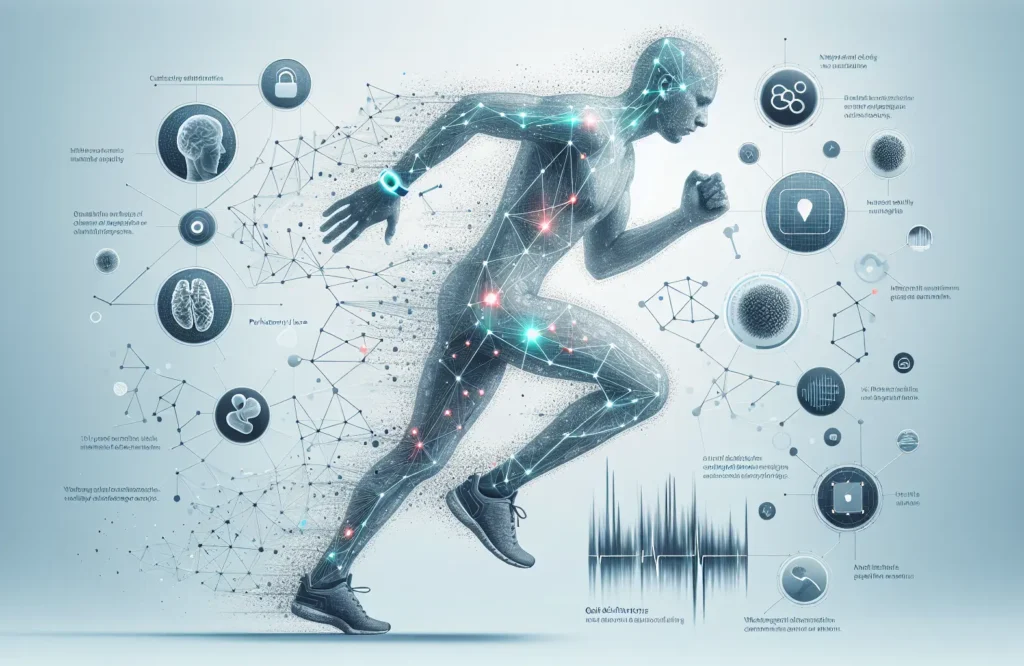
By CAFMI AI From npj Parkinson’s Disease (Open Access)
Parkinson’s disease (PD) is a progressive neurodegenerative disorder characterized by motor symptoms that often include distinct gait disturbances. Clinicians have traditionally relied on subjective clinical examinations to assess these impairments, but recent advances in wearable sensor technology have introduced digital gait biomarkers as a more objective, sensitive tool. These biomarkers are quantitative measurements of specific gait features captured by sensors such as inertial measurement units (IMUs) in wearables, enabling continuous, real-world monitoring of patients. One of the key clinical implications is the ability of these digital biomarkers to detect very subtle changes in gait that may signal an individual’s susceptibility or risk of developing Parkinson’s disease even before clinical diagnosis is possible. For example, parameters like increased gait variability and slower walking pace have been identified in at-risk populations, providing valuable opportunities for earlier intervention and monitoring. Early identification is crucial because it opens a therapeutic window during which lifestyle changes, neuroprotective strategies, or exercise interventions may delay disease onset or slow its progression. Thus, digital gait biomarkers represent a breakthrough for clinicians aiming to shift from reactive to proactive management of PD by recognizing early motor signatures indicative of neurodegenerative processes.
As Parkinson’s disease progresses, changes in gait worsen and extend beyond mobility issues to reflect broader motor and cognitive decline. Longitudinal studies utilizing digital gait biomarkers have demonstrated that specific gait parameters consistently deteriorate with advancing disease stages. These include increased gait variability, reduced stride length, and slower walking speeds, which correspond with worsening bradykinesia, rigidity, and balance problems commonly seen in PD. Clinically, this means that digital gait analysis can serve as a reliable and sensitive tool to objectively monitor disease progression over time. Such monitoring is essential for tailoring treatment plans and adjusting therapies to individual needs. Furthermore, digital gait biomarkers have proven valuable in evaluating the efficacy of exercise interventions designed to improve motor function in PD patients. Research shows that targeted exercise programs can lead to measurable improvements in gait performance—such as increased pace and reduced variability—detected through wearable sensor metrics. This offers clinicians a precise, data-driven way to assess rehabilitation outcomes and optimize exercise prescriptions. Additionally, gait biomarkers can act as endpoints in clinical trials, facilitating the assessment of novel therapies’ effects on motor symptoms in a quantifiable manner.
Beyond risk detection and disease monitoring, digital gait biomarkers have significant prognostic value in Parkinson’s disease management. Certain gait features captured via wearable devices are predictive of adverse clinical outcomes, including increased risk of falls, cognitive decline, and reduced overall survival. For instance, patients exhibiting pronounced gait variability and impaired gait rhythm are more likely to experience falls, a leading cause of morbidity and disability in PD. Since falls can lead to serious injuries and hospitalization, early identification through digital biomarkers enables timely intervention strategies such as physical therapy or environmental modifications to mitigate risk. Moreover, gait disturbances often parallel cognitive deterioration, and digital biomarker data can help clinicians anticipate dementia progression, guiding more comprehensive care planning. The prognostic insights provided by digital gait analysis support personalized care decisions, including prioritizing multidisciplinary approaches and determining follow-up intervals based on individualized risk profiles. Clinicians are encouraged to integrate these non-invasive, easily accessible digital tools into routine practice to enhance early diagnosis, monitor disease course, and improve patient outcomes through informed prognostic evaluation. Future research should focus on standardizing biomarker measurements, combining gait data with other clinical and imaging markers, and validating predictive models to enable personalized medicine in Parkinson’s disease.
Read The Original Publication Here